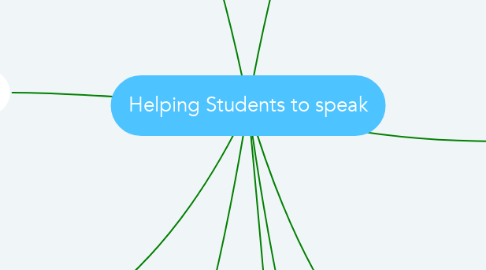
1. Structured Output Activities
1.1. Information Gap Activities
1.1.1. Filling the gaps in a schedule or timetable: *Partner A holds an airline timetable with some of the arrival and departure times missing. Partner B has the same timetable but with different blank spaces. The two partners are not permitted to see each other's timetables and must fill in the blanks by asking each other appropriate questions.
1.1.2. Completing the picture: The two partners have similar pictures, each withndifferent missing details, and they cooperate to find all the missing details
1.2. Jigsaw Activities
1.2.1. ss work in groups of four. Each student in the group receives one panel from a comic strip. Partners may not show each other their panels. Together the four panels present a narrative. By using pictures that lend themselves to alternative sequences, so that the partners have to negotiate among themselves to agree on a satisfactory sequence.
1.2.2. Ss first work in input groups (groups A, B, C, and D) to receive information. Each group receives a different part of the total information for the task. Ss then reorganize into groups of four with one student each from A, B, C, and D, and use the information they received to complete the task. The four recordings all contain the same general information, but each has one or more details that the others do not. In the second stage, ss reconstruct the complete story by comparing the four versions
2. Communicative Output Activities
2.1. Role Plays
2.1.1. Ss are assigned roles and put into situations that they may eventually encounter outside the classroom. RP imitate life, the range of language functions that may be used expands considerably.Also, the role relationships among the ss as they play their parts call for them to practice and develop their sociolinguistic competence. They have to use language that is appropriate to the situation and to the characters.
2.2. Disscussions
2.2.1. Let ss suggest the topic for disscusion or choose from several options. Disscusion does not always have to be about serious issues. Ss likely to be more motivated to participate if the topic is insteresting for them.
3. Some activities to develop speaking skills.
3.1. Describing
3.2. Painting / Photograph
3.3. Compare two similar objects
3.4. Newspaper articles from different papers.
3.5. Guess what/who I am describing
3.6. Narrating
3.7. Storytelling - Single or collaborative
3.8. Learn a story/poem by heart
4. Speak English
4.1. 1. Define your objectives to ss clearly. progressing.
4.2. 2. Set realistic goals
4.3. 3. Make sure ss know how well they're
4.4. 4. Provide criteria for ss to judge their own performance.
5. Which are the best speaking activities.
5.1. a. Are relevant to ss interests, simulate them to want to talk and are at the right language level.
5.2. b. Contain an element of choice as how ss can do them and what they say, to allow them the express their own personalities at least a little.
5.3. c. Are localised and often made adapted by the teacher who knows his/her ss best. It is always a good idea to personalise and customise course book exercises where possible.
5.4. d. Force ss listen to each other.
5.5. e. Have a clear objective.
5.6. f. Contain an information or opinion gap. Good speaking exercises have either an information gap or an opinion gap.
6. Strategies for Developing Speaking skills.
6.1. Using Minimal Responses
6.1.1. help ss build up a stock of MR that they can use in different types of exchanges.
6.1.2. MR are use to indicate understanding, agreement, doubt, and other responses.
6.1.3. This enables ss to focus on what the other one is saying, without having to simultaneously plan a response.
6.2. Recognizing Scripts
6.2.1. The relationship between a speaker's turn and the one that follows it can be anticipated.
6.2.2. Help ss develop speaking ability by making them aware of the scripts.
6.2.3. Ss can predict what they will hear and what they will need to say in response.
6.2.4. Give ss practice in managing and varying the language that different scripts contain.
6.3. Using language to talk about language
6.3.1. Misunderstanding and the need for clarification can occur in any type of interaction, whatever the participants' language skill levels.
6.3.2. Give ss strategies and phrases to use for clarification and comprehension check.
6.3.3. Create an authentic practice environment within the classroom itself.
